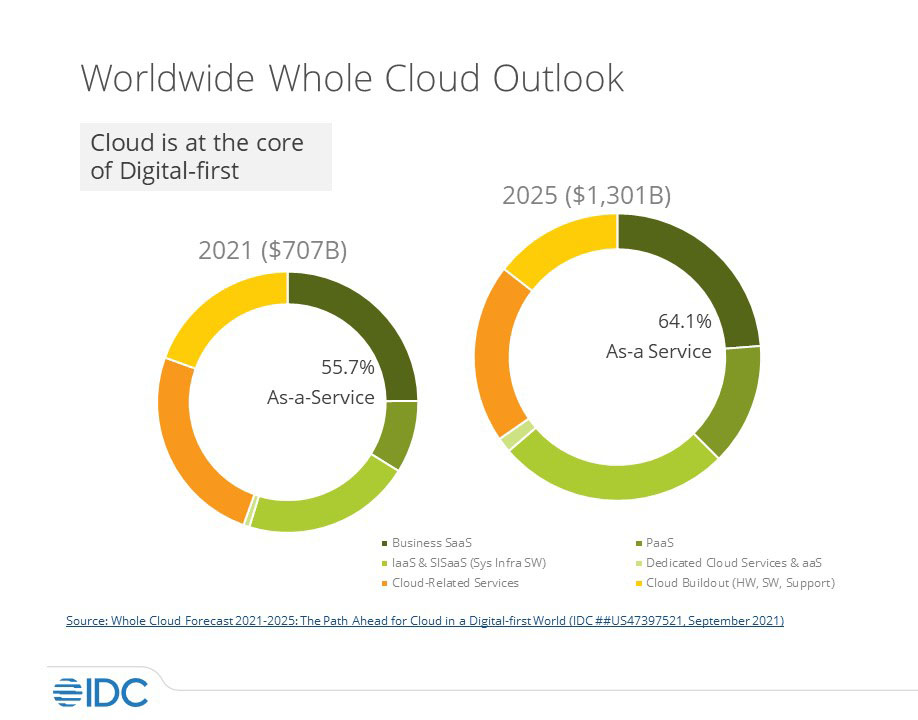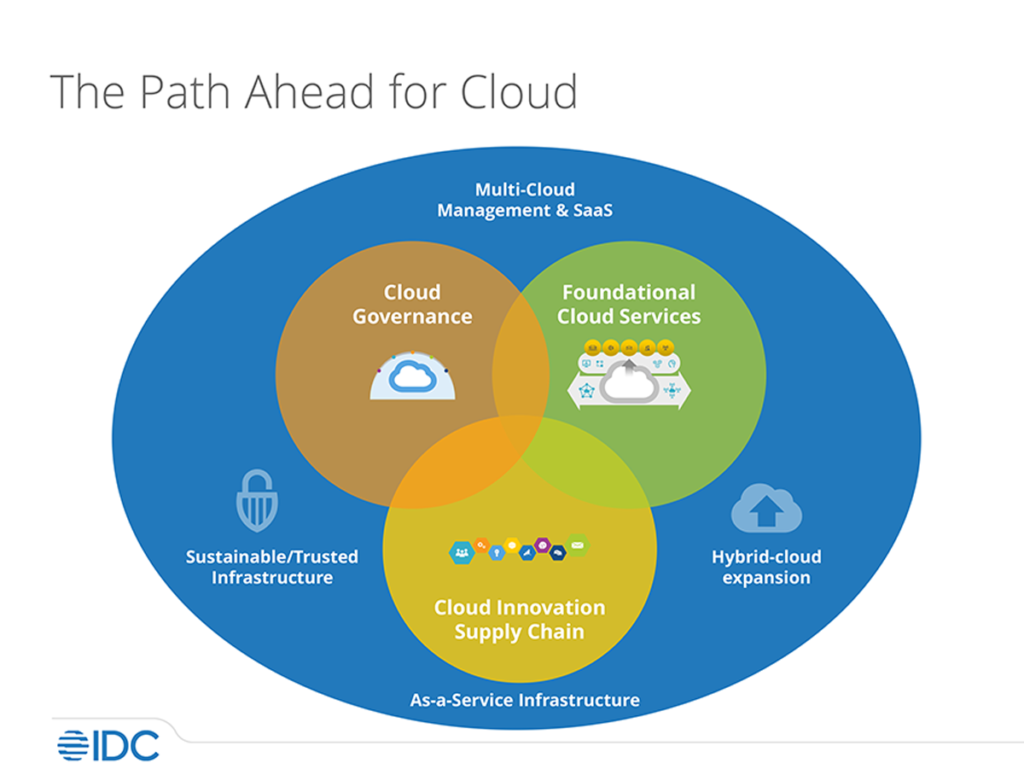The New Fundamentals of Cloud and The Path Ahead
Amazon recently convened its 10th re:Invent conference in Las Vegas, after celebrating the 15th anniversary of the launch of its EC2 cloud computing service this summer. While people will debate the people and product origins of “the Cloud”, no one can deny that over the past decade, Cloud was the foundation for the delivery of mobile and content services. It also drove a major rethinking of traditional enterprise computing environments. By the end of 2021, annual spending on as-a-Service cloud resources will reach $394 billion, with another $313 billion spent on the hardware, software, and services used to design, build, secure, and operate all these cloud environments (both public and private).
Going from zero to $705 billion a year, in just 15 years is impressive, but its only the first act. In 2025, the whole cloud economy will surpass $1.3 trillion. What are the key forces driving this continued cloud expansion, and where should organizations focus in the new technology landscaped, shaped by this expansion? Finding the answers to these questions is our job at IDC.

Cloud is playing an ever-greater role across the IT industry, as we all pivot to competing in a digital-first world. Companies, governments, and consumer are demanding digital-based capabilities and enhancements that improve lives and and achieve desired outcomes. Entire industries want to intelligently use data to their advantage. Both are possible because cloud provides the foundation for faster access to digital infrastructure and platform technologies.
In this second act, Cloud (in all its permutations) will play an ever greater, and even dominant, role in shaping the IT industry. All IT vendors, developers, and providers will focus on delivering greater efficiency, more flexibility, and faster innovation.

1. Suppliers in the cloud technology supply chain (silicon, systems, facilities and core software) will add as-a-Service infrastructure as a standard digital infrastructure option. Enterprises will depend upon suppliers to deliver rapid access to new technologies at scale, so they can develop and deploy new, more specialized, and more trusted innovations across diverse environments from edge, to network, to core.
2. The assessment, management, optimization, and securing of diverse cloud resources (and data) will pose the most critical operational challenges for IT organizations. They will require cloud governance SaaS, and managed cloud services, that use embedded AI to make automation more effective, while also enabling consistent governance across multiple cloud environments.
3. Cloud service providers have deep insights into changing workload mixes across industries. Whether you’re a SaaS provider or an enterprise engaged in digital transformation, your developers depend upon providers of foundational cloud services (FCS) to anticipate and accelerate the pace of digital innovation.
- The reliance on FCS will be so strong that many G2000 organizations will focus on business outcomes rather than IT requirements, when assessing cloud partnerships. They will value access to providers’ full portfolios from device to edge, and from data to industry ecosystem.
- FCS providers will drive a new wave of hybrid cloud expansion in partnership with supply chain partners in infrastructure, communications, and colocation. The goal is to provide much wider access to cloud resources in network and edge locations.
- FCS providers will also invest heavily in building out capacity to enable the embedding of AI/ML for visualization, inferencing and automated operations, into all their own service offerings, as well as those of their ecosystem partners.
My colleagues and I are already delivering research and insights on these new cloud fundamentals with much more to come next year. Our top priorities for 2022 include providing CIO and business leaders with insights and guidance on:
- The benefits and challenges of driving digital innovation based on a primary FCS partner strategy, versus adopting a multiple or cross cloud strategy
- The evaluation and adoption of the right as-a-Service infrastructure offerings, from leading providers of digital infrastructure
- The use of Cloud Governance solutions to govern use of cloud resources, versus employing cloud-based governance to manage remote applications, and data
We will also clarify the role of technology providers across all three cloud pillars in using cloud services to address sustainability and trust. We look forward to working with all of you in Act 2 of Cloud.










